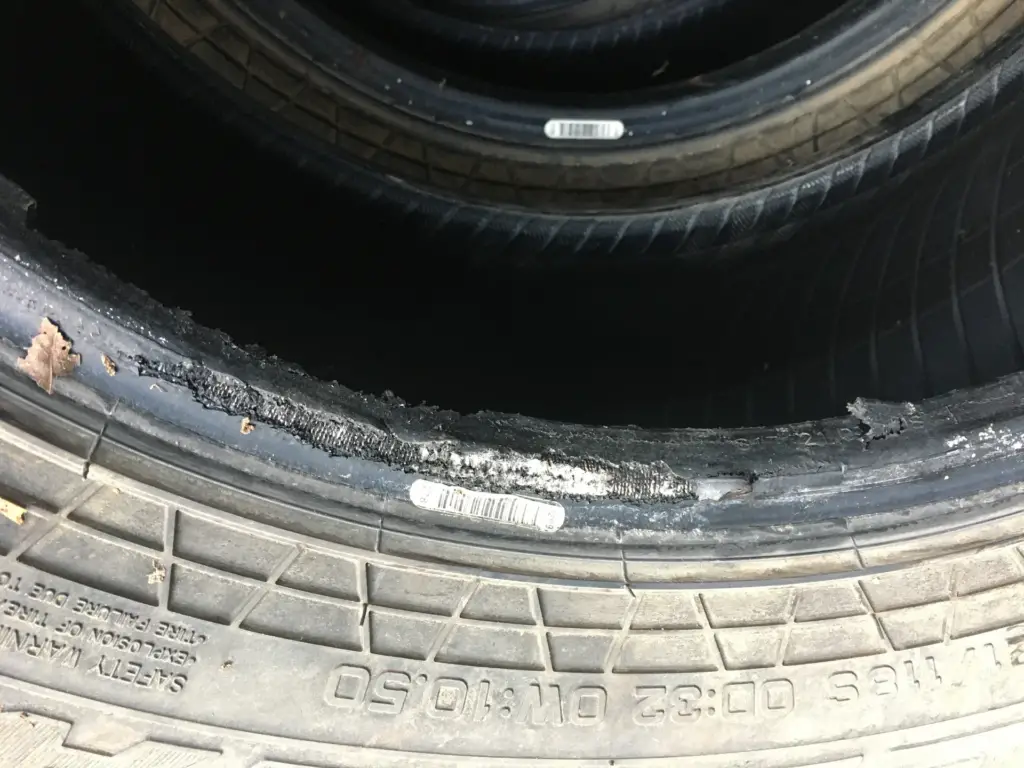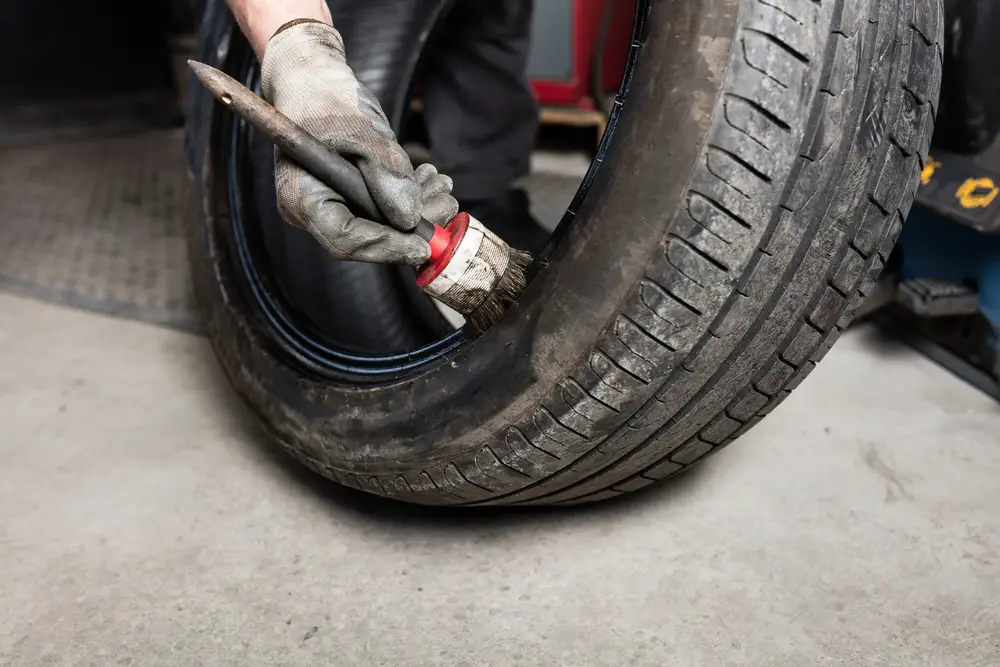Tires that don’t have enough air inside can get damaged when they are put on wheels. Make sure your tires have enough air. You can damage your tire if you drive too close to the sidewalk or hit something on the road. Don’t hit curbs or other things on the road. It is then difficult to mount tires on the wheel. Sometimes, they need a little push. In order to put the tire on the wheel, you need the right tools and techniques.
There are more reasons that initiate tire bead damage from mounting. Read the article to know all of them along with the solution in detail.
Key Takeaways
- Most tire bead damage occurs during mounting.
- It happens due to underinflated tires, tires rubbing on curbs, forceful installation, and lack of lubrication.
- Always ensure enough air inside the tire and apply enough lubricant.
Is Tire Bead Damage from Mounting Common?
Yes, tire bead damage from mounting is relatively common. This type of damage can occur when tires are not handled properly during the mounting or dismounting process.
The tire’s bead incorporates steel cords to prevent stretching. For tire mounting, the rim features a narrow section in its center. In this design, the bead can move smoothly over the rim’s edge as one side slips into the narrow area.
Low-profile tires, however, present a challenge in aligning the second bead with the narrow area. Additionally, this exertion can strain the inner edge of the bead on the opposite side. Because the bead is pushed downward from the top during tire mounting, it is inherently resistant to damage.
There are multiple factors responsible for tire bead damage from mounting. The next section incorporates all the possible reasons along with the solutions
Tire Bead Damage from Mounting: Reasons And Solutions
Discovering the underlying reasons for tire bead damage is important for several key reasons. Tire bead damage can lead to premature tire wear, air leakage, and compromised tire performance. So, understanding the reasons and solutions is ultimately important.
| Reason | Solution |
| Underinflated tires | Inflate the tire |
| Tire rubbing on curbs | Avoid collisions with curbs |
| Forceful installation | Use the correct method of installation |
| Tool mishaps | Ensure proper handling |
| Lack of lubrication | Employ enough lubrication |
This quick preview might not be enough. So, it’s time to discuss the reasons and solutions in a comprehensive manner.
Reason 1: Underinflated Tires
Insufficiently inflated tires can contribute to the occurrence of tire bead damage during the mounting process. When a tire lacks proper inflation, the reduced air pressure causes the tire to fit loosely on the rim.
Thus, the tire bead can shift or move on the rim due to displacement. Due to this, mounting the tire can damage the bead.
Then, Underinflated tires come into greater contact with the road’s surface, resulting in heightened friction. The added friction can make mounting the tire onto the rim more challenging, requiring more force and possibly damaging the bead.
Solution:
To get over the situation, you need to inflate the tire to the recommended level. If your spare tires do not have pressure sensors, you will need to manually check their air pressure.
Employ a tire pressure gauge to confirm that tires are adequately inflated before initiating the mounting process. Above all, conduct routine inspections and uphold the appropriate tire inflation pressure as specified by the manufacturer.

Reason 2: Tire Rubbing on Curbs
Rubbing on curbs can cause tire bead damage during the mounting process. In severe cases, this damage can cause the tire to fail or even explode during the mounting process, resulting in serious injuries or death.
Solution:
Exercise caution to avoid collisions with curbs or other road impediments that could lead to tire damage.
Use precise mounting and demounting techniques, while handling the tires with a gentle touch at the same time. Also, verify the appropriate tool head setting before initiating the tire mounting process.
Reason 3: Forceful Installation
Tires are not engineered to effortlessly glide onto the rim. It isn’t as simple as mounting spare tires to the roof rack. Occasionally, a certain degree of pressure may be necessary to properly fit them. Nevertheless, excessive force or an improper approach has the potential to inflict harm upon the tire bead.
Inside the tire’s bead lie steel cords that contribute to its durability and steadiness. Nonetheless, these cords lack the capacity to stretch. Forcefully attaching a tire to a rim without the right techniques or tools can cause the bead to stretch excessively.
Consequently, this stretching can result in bead damage and undermine the overall structural integrity of the tire.
Solution:
To get over the situation, you need to employ the correct methods and suitable tools when mounting and dismounting tires. This encompasses the application of lubrication to the bead for friction reduction.
Refrain from exerting undue force or pressure during the installation phase. To achieve uniform seating, align the tire precisely with the rim. If you are uncertain about tire mounting procedures, you should consult a professional
Reason 4: Misuse of Tools
Tools mishaps can contribute to tire bead damage during the mounting process. Incorrect tool selection or improper tool usage can lead to tire bead damage when mounting.
For instance, employing a pry bar or screwdriver to forcefully attach the tire onto the rim can result in bead stretching or misalignment. Also, A momentary mishandling can result in your tire bead sustaining an impact.
Solution:
The situation is easy to handle. It is important to use the right tools for the job and to use them correctly. You should avoid forcing the tire onto the rim with pry bars or screwdrivers.
The rim should be properly protected during mounting. It may be necessary to secure the rim from below or to use a safeguarding cover.
Reason 5: Lack of Lubrication
Applying a small amount of lubrication can significantly simplify the mounting and demounting process. Yet, neglecting this step could potentially result in harming the rubber within the tire bead.

A tire’s bead contains steel cords that provide robustness and stability. However, these cords cannot stretch. It is possible for the bead of a tire to extend beyond its permissible limits when it is attached to a rim without adequate lubrication. Stretching can damage the tire’s bead and weaken its structural integrity.
Solution:
During the mounting process, employ suitable tire mounting lubrication on the bead to minimize friction. Also, you need to ensure an ample yet not excessive application of lubricant to cover the tire bead region. Use commercially available lubricants made for mounting tires. Also, vegetable oil and animal soap solutions may be used.
However, if uncertain about the accurate tire mounting procedures, consider seeking professional guidance.
How to Avoid Tire Bead Damage
You already have significant solutions to prevent tire bead damage during mount. In order to prevent tire bead damage in general, you need to maintain the following things.
- Always avoid potholes, debris, and other hazards on the road that can cause tire damage. If you notice wires sticking out of the tires, immediately change them.
- Guarantee the adequate safeguarding of the rim throughout the mounting process. This could entail securing the rim from below or utilizing a protective covering.
- Ensure that the tire bead and other parts are handled with care.
You can minimize the risk of wheel damage during tire mounting by following these guidelines.
Frequently Asked Questions (FAQs):
How Do You Know If Your Tire Bead Is Damaged?
If the tire is damaged you will observe accelerated loss of air pressure in your tire, beyond the norm. In cases of uneven tire wear, this could also be indicative of bead damage or other underlying tire-related concerns. Also, the bead may have slipped out of its housing if the tire is under or overinflated.
What Happens If You Tear The Bead On A Tire?
In the event of a torn tire bead, there’s a potential for subsequent tire failure while in operation or even a potential explosion during the mounting process. Such circumstances could result in severe injury or loss of life. The tire bead holds paramount importance as it imparts strength and stability to the tire. A torn bead can compromise the tire’s structural integrity, rendering it unsafe for use.
Does Mounting Tires Damage Wheels?
Yes. “Head drag” occurs when the mounting head of the tire machine touches the wheel surface, causing scratches. It is physically demanding and intricate to mount and unmount tires, particularly low-profile tires. The wheel can be damaged if this process is not executed properly.
Conclusion
I hope you got to know how tire bead damage from mounting along with the solutions.
It is not so difficult to get over the situation. Learn how to solve the problem in the article. It will be possible for you to avoid such inconveniences. In case the problem persists, you should consult with a professional.
